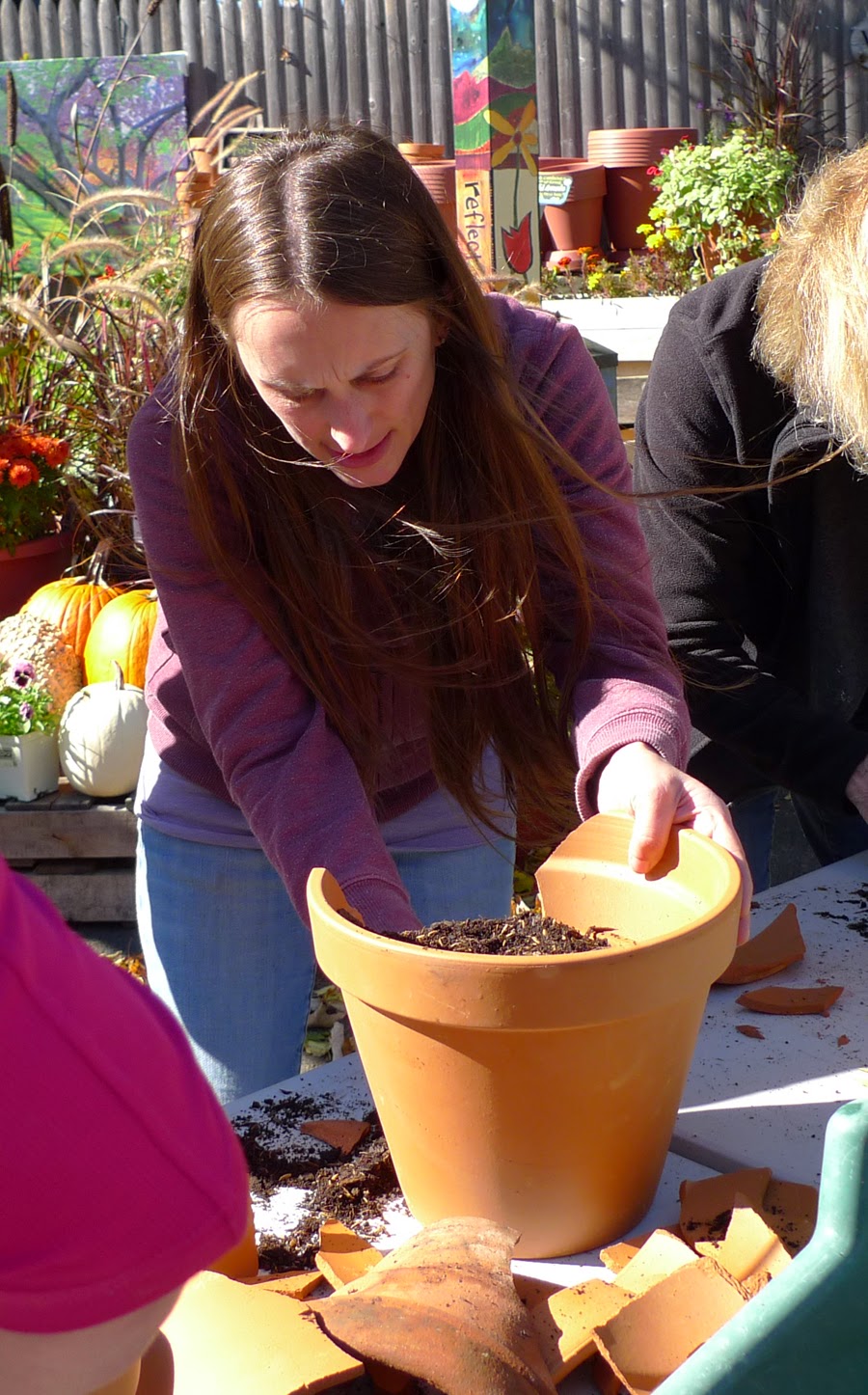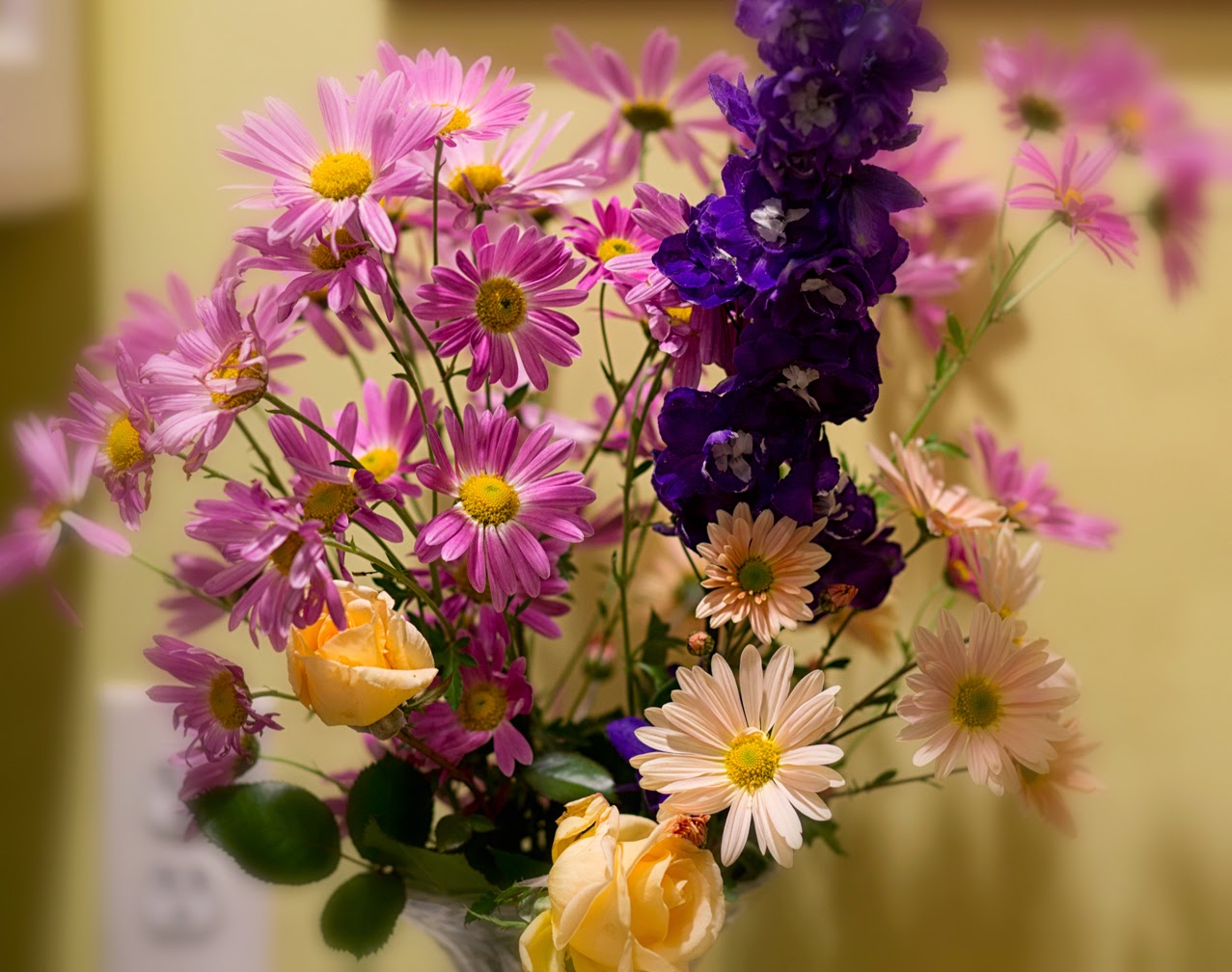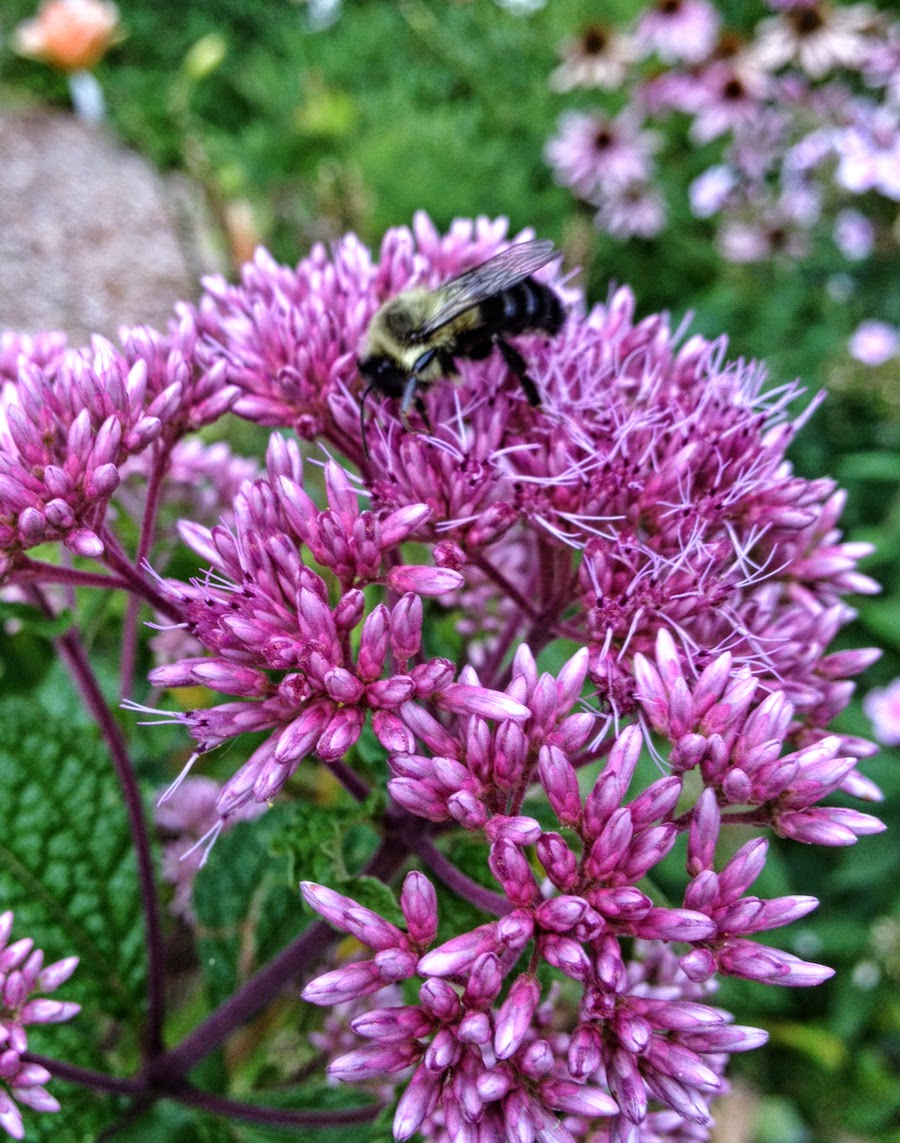 |
| Pansies grown from seed in 2014, |
It seems everyone is already nostalgic on this New Year's Eve. One of the highlights of my year was my garden, where I sought refuge when life became too chaotic. The garden not only was a place for me to focus excess energy, but also a way to socialize with others. I ended up sharing 256 photos of my garden on my personal Facebook account (where my friends graciously humored my collection of photos of flowers). I also had the opportunity to be interviewed for the Back to My Garden podcast, which was awesome! As usual, I made more friends at garden centers and signed up for one of my town's garden clubs (apparently there are three). The front garden became my conversation piece as dog walkers and joggers went by. I shared (literally) the fruits of my labor, where people in the neighborhood were given pears from the trees or tomatoes from the grow beds.
 |
| So many tulips! I hope they return this year. |
This blog in itself headed into a new direction. Instead of only focusing on my personal perspectives of gardening, I used my journalism training and prior experience to make this blog a reporting platform for all things gardening. Beginning in February, I began attending local lectures and workshops to write up for Frau Zinnie. I covered a total of 26 gardening events in 2014, a number I hope to double in 2015. I love learning about gardening, and I love sharing what I learn with you. I also added a new page that lists all my reviews in one place. It's a short list right now, but one I plan on expanding in 2015.
 |
| One of the several hellebores added to the garden this year. |
As for production, the garden produced the following food: 22 pounds of tomatoes, 3 pounds of beans, 1 pound of garlic and 57.5 pounds of pears. Just imagine what the totals would have been if I planted the garlic in a better location or if the squirrel hadn't stolen so many pears! (The totals were also reported to Go Grow It, a twitter handle where gardeners were encouraged to report their food pound totals with the aim of reaching a collective 5,000 pounds.)
 |
| The female butterfly I raised thanks to my friend, Diane St. John. |
As for the garden itself, it held up pretty well, despite a drier than normal summer. I battled one main garden pest, the groundhog, that I learned to live with as the season went on. New paths were created in the front garden with mulch that took me until autumn frost to move from the driveway to its permanent home. There were lots of toads and butterflies in the garden, and the return of monarchs as well (and thanks to a friend I was able to raise one to release). I finally managed to photograph the hummingbirds on one sunny afternoon as well as the elusive Carolina wren, which proves that the key to attracting wildlife to your garden is by not using chemicals.
 |
| The first garden bed I chiseled out of the lawn in 2009. |
Overall, the garden put on its best color show to date. It has grown dramatically from the first growing season in 2009, where the property consisted of only lawn. Not even a shrub. Looking back at one of my only photos from 2009 (at right), I can't believe how far it has come. Instead of lush green weeds (don't be fooled, it was never a pretty lawn), there are six trees, a garden path and two arbors, just to name a few changes. And thankfully I realized how tacky red mulch is. (Dyed? Yuck. No thank you anymore!) Some of those plants didn't make it (like the lilies that were decimated by the red lily beetle and the coreopsis that just doesn't like my garden, no matter where I try to plant it). Other plants, like the silver lamb's ear, have become a running theme in the front garden. Now the front garden is larger, and it's my (often out of control) oasis.
So, as for gardening plans (or resolutions), here's what I hope 2015 will bring:
 |
| Alyssum in the fall. |
1. Plant more alyssum. I've put post-it notes all over to remind myself to order more seeds to grow in the garden. This plant was a workhorse this year, acting as an understudy for all the dramatic flowers, gracefully subsiding in the heat of the summer and returning with full vengeance in the fall. Alyssum, where have you been all my life?
2. Grow more food. I challenge you to, also. Just imagine if we all used our parcels of land to grow just one food crop. It doesn't have to be a vegetable. Think of all the blueberries, basil or garlic you can grow. Find things that you love and are expensive to purchase at the farm stand or grocery store.
3. Create a garden for the house rabbits. When the groundhog took out my first attempt this year of a garden for rabbits, I didn't put up a fight. This year, I plan to grow more herbs and vegetables to feed the needy little adorable beasties that live in our home.
4. Provide better support for the black raspberries. Luckily, Pinterest is a wealth of inspiration.
5. Harvest and dry my own herbs this year for cooking. I have lovely oregano - I shouldn't be wasting it!
 |
| "The Fairy" may look dainty, but she has long thorns. |
7. Find out why my rhododendrons are not blooming (is it that blasted black walnut or the moisture-sapping maple from the neighbor's yard?). If I can't fix it, I think it's time to say goodbye and plant something that will be happy. Life is too short to struggle with plants that are Debbie Downers. (That goes for you too, mountain laurel.)
8. Don't start as many pansies from seed. This will be a hard promise to keep. But I need to keep it in check because they take up too much room when I really need to be starting other plants under my grow lights.
9. Try something new. Pumpkins? Corn? I think I might have the perfect experimental spot in the backyard to play with.
10. Make better use of interspersing my edible plants with my ornamentals in the front garden.
That's just a jumping off point, but I hope to make Frau Zinnie even better in 2015. Of course, thank you to my husband who copy edits my work and writes snazzier headlines than I can. (It helps being married to a great editor.)
Most importantly, thank you for following my blog this year. Onward to 2015!
8. Don't start as many pansies from seed. This will be a hard promise to keep. But I need to keep it in check because they take up too much room when I really need to be starting other plants under my grow lights.
9. Try something new. Pumpkins? Corn? I think I might have the perfect experimental spot in the backyard to play with.
10. Make better use of interspersing my edible plants with my ornamentals in the front garden.
That's just a jumping off point, but I hope to make Frau Zinnie even better in 2015. Of course, thank you to my husband who copy edits my work and writes snazzier headlines than I can. (It helps being married to a great editor.)
Most importantly, thank you for following my blog this year. Onward to 2015!








































